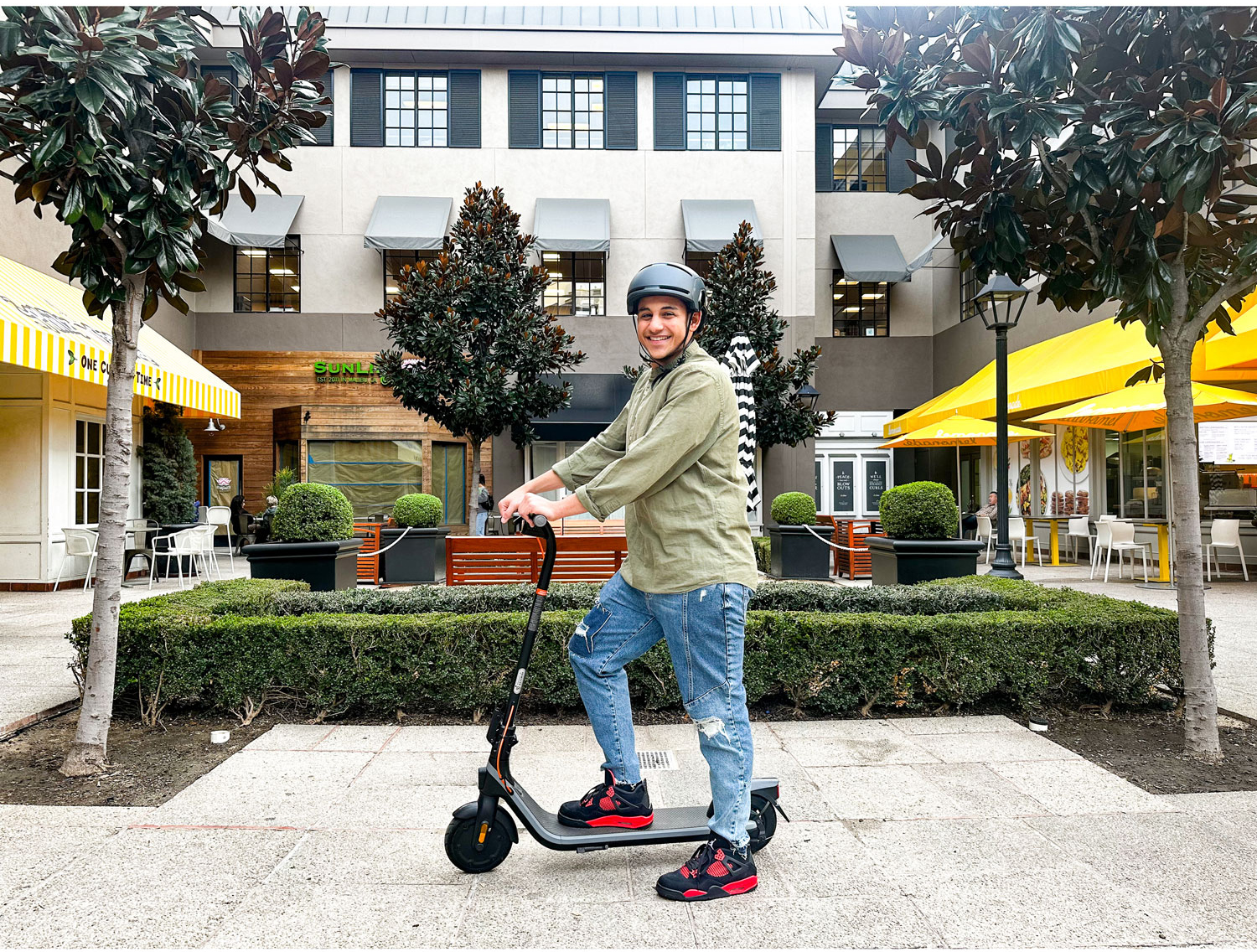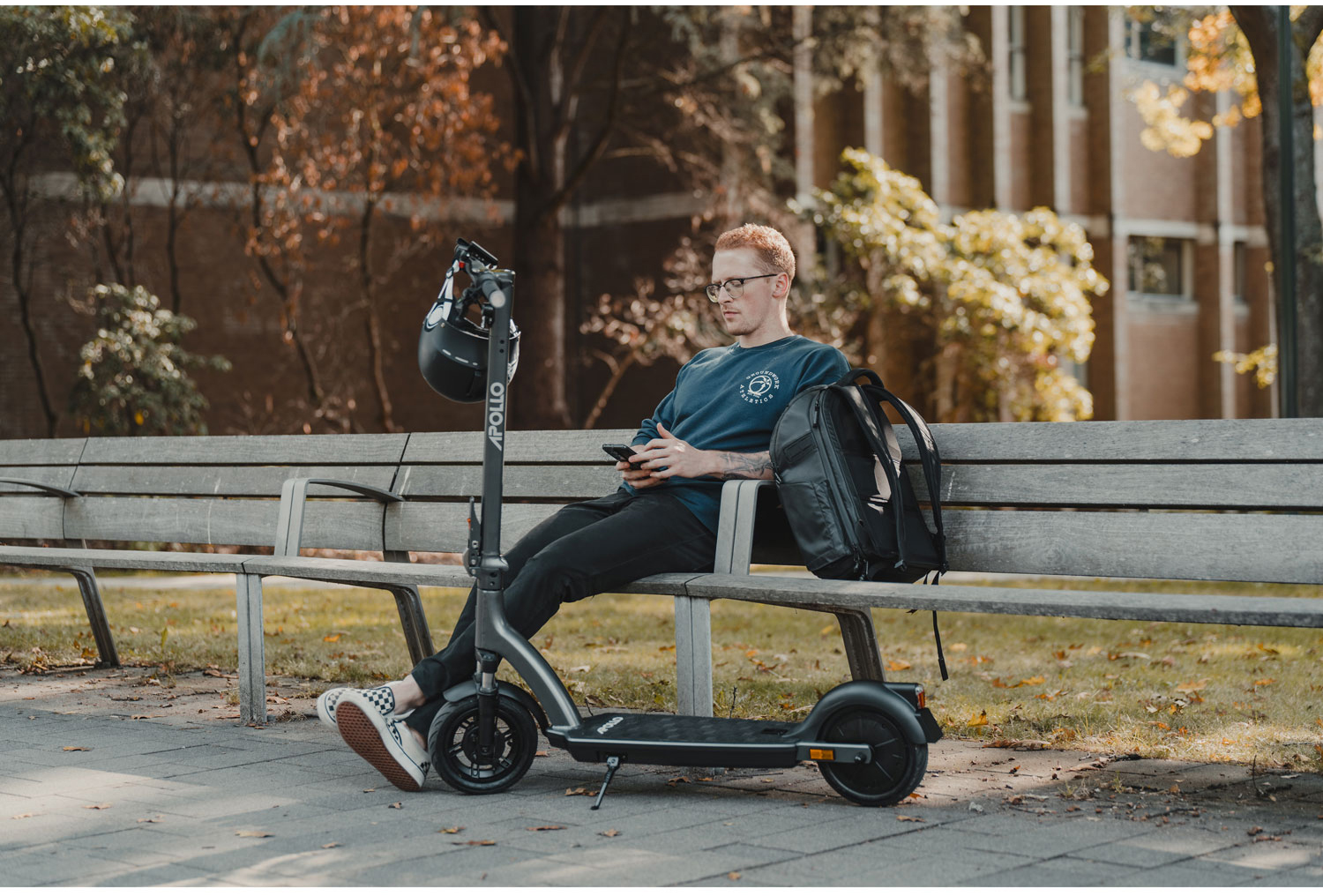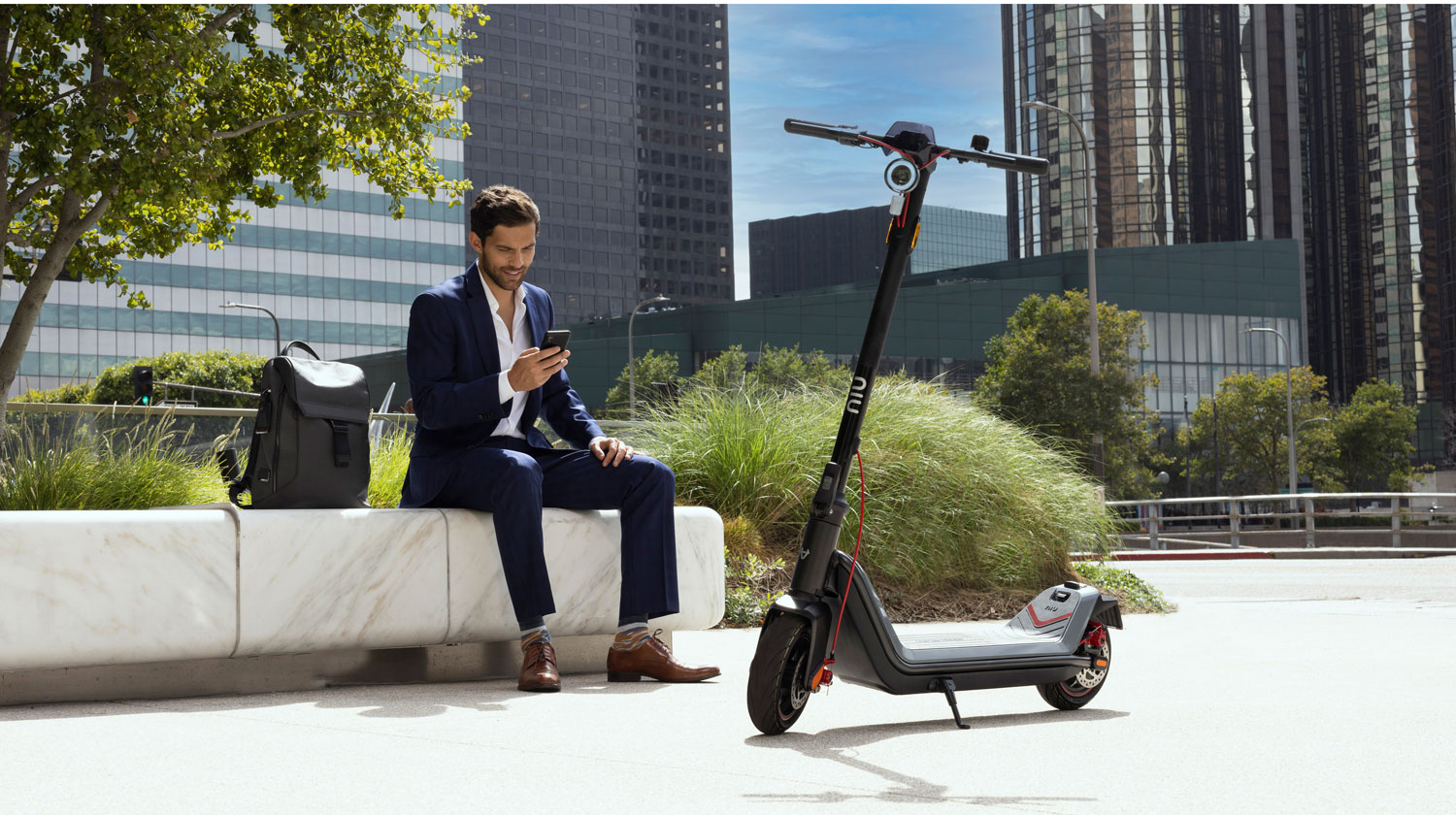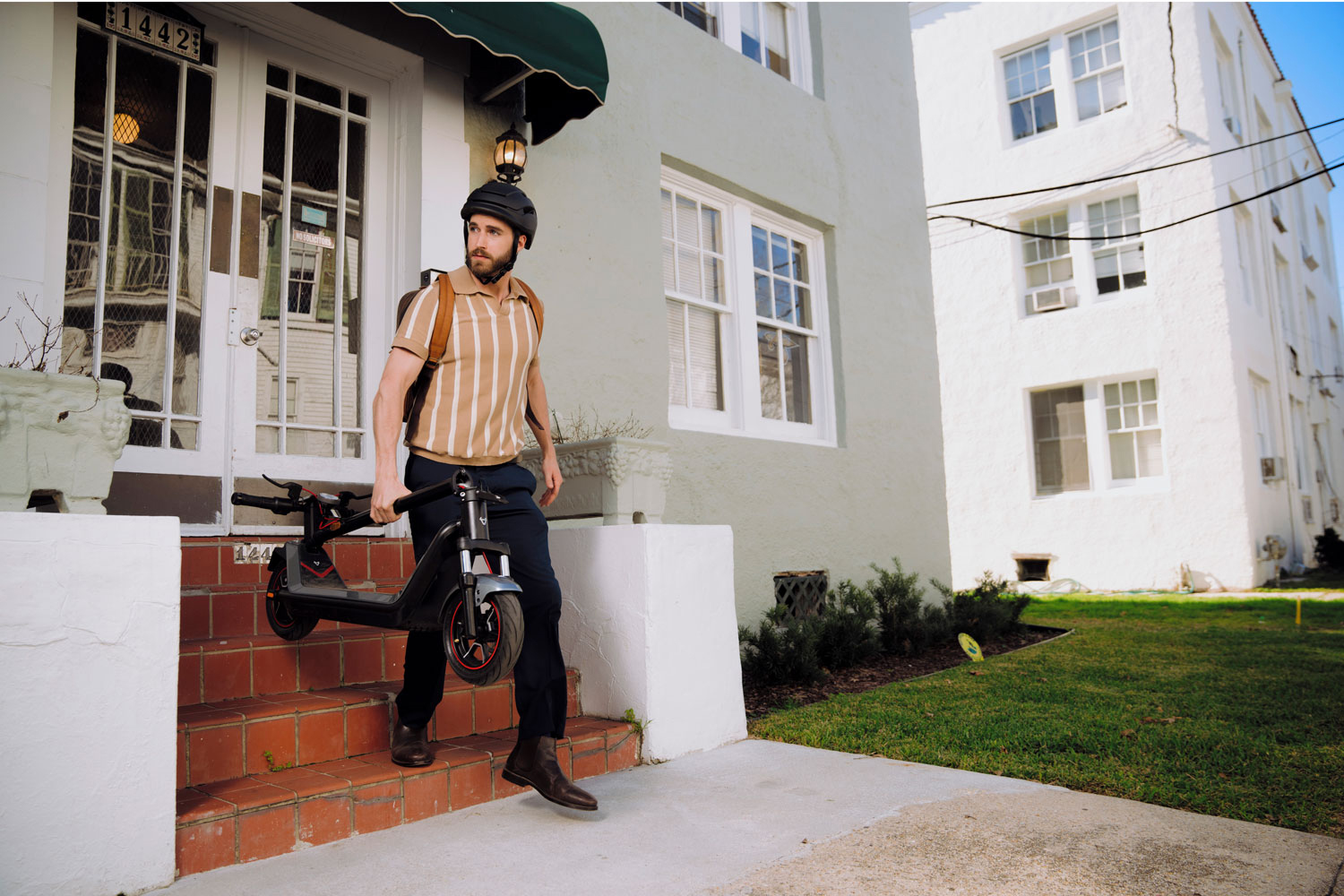
Electric scooters have surged in popularity as a convenient, eco-friendly way to get around—but owning one isn’t just about the ride. Regular maintenance is key to keeping your scooter safe, efficient, and long-lasting. Whether you’re new to the world of e-scooters or already have one, it’s just as important to know how to take care of it as it is to choose the right model. If you’re still in the shopping phase, our electric scooter buying guide is a great place to start. Once you’ve got your scooter, this guide will help you keep it in top shape.
Whether you’re zipping to class, commuting to work, or cruising around your neighbourhood, maintaining your electric scooter isn’t just about performance—it’s about safety, efficiency, and longevity. A well-maintained e-scooter rides smoother, lasts longer, and is less likely to need costly repairs.
In this guide, we’ll cover everything you need to know about electric scooter maintenance, from battery care and tire inspections to brake checks and cleaning routines. These easy-to-follow tips will help you get the most out of your ride while keeping it safe and dependable.
Why regular electric scooter maintenance is crucial
Taking care of your electric scooter isn’t just a “nice to have”—it’s essential. Just like a car or a bicycle, your scooter is made up of mechanical and electrical components that can wear out over time or become compromised if not looked after. Let’s look at why a routine maintenance check should be part of your scooter care habit.
Safety
Safety should always be your top priority. Electric scooters travel at speeds that can lead to serious injury if something goes wrong. Brake failures, worn-out tires, or malfunctioning lights can all lead to accidents. Regular maintenance ensures that your scooter is always in a road-worthy condition, minimizing risks during your ride.
Performance
A clean, well-tuned scooter performs better. You’ll notice a smoother ride, responsive acceleration, and better handling. Checking things like tire pressure, brake responsiveness, and battery performance regularly can significantly enhance your riding experience.
Cost-effectiveness
Preventive maintenance can save you money in the long run. Small issues caught early—like low tire pressure or frayed wires—can be fixed quickly and inexpensively. Left unattended, these issues can lead to major problems requiring costly repairs or even a full replacement. Think of maintenance as a low-cost insurance policy for your scooter.

Battery maintenance
The battery is the heart of your electric scooter. Keeping it healthy ensures a consistent ride and prolongs the life of your scooter overall. Let’s break down the key aspects of battery care.
Proper charging practices
Always use the original charger that came with your scooter or one approved by the manufacturer. Avoid overcharging—many scooters come with built-in protection, but it’s still good practice to unplug the charger once it reaches full capacity. Overcharging or using incorrect chargers can lead to overheating, which deteriorates battery life and poses a safety hazard.
Also, allow the battery to cool down before charging if you’ve just completed a long ride. Charging a hot battery can shorten its lifespan.
Storage tips
When you’re not using your scooter for an extended period—like during winter—it’s crucial to store it properly. Choose a cool, dry location away from direct sunlight and freezing temperatures. If possible, keep the battery partially charged (around 50–70%) instead of fully depleted or fully charged. This helps preserve the battery’s capacity over time.
Signs of battery wear
Noticing that your scooter doesn’t go as far on a full charge? Or that it’s taking longer to charge? These could be signs that your battery is wearing out. A healthy battery should charge consistently and provide a predictable range. If you notice performance dipping regularly, it might be time to consider a replacement or seek professional advice.
Tire care
Your tires are your point of contact with the road, and they have a major impact on your ride’s comfort, stability, and safety. Here’s how to keep them in good shape.
Pressure checks
Maintaining proper tire pressure is crucial for a smooth and safe ride. Under-inflated tires reduce efficiency and make the scooter harder to control. Over-inflated tires, on the other hand, can burst or reduce traction.
Most electric scooters come with a recommended tire pressure—check your owner’s manual or manufacturer’s website. Use a pressure gauge to check your tires regularly, ideally once a week if you ride often.
Tread inspection
Just like car tires, your scooter’s tires have treads that help with grip, especially in wet conditions. Over time, these treads wear down, reducing traction and increasing the chance of slipping. Inspect the tread depth regularly, and replace tires that show signs of balding, cracks, or other damage.
Flat prevention
Try to avoid riding over glass, nails, or debris, and always stick to paved surfaces where possible. If your scooter has pneumatic (air-filled) tires, consider using tire sealant for an extra layer of protection. If you do get a flat, many scooters allow for tire replacement at home, but if you’re unsure, it’s best to consult a technician.

Brake system maintenance
The brake system is one of the most critical components for rider safety. Whether your scooter uses disc brakes, drum brakes, or electronic braking systems, regular checks are a must.
Brake pad inspection
Brake pads naturally wear down with use. If you notice squeaking sounds or decreased stopping power, it may be time to replace them. Depending on how often you ride, check your brake pads every few weeks or at least once a month.
Brake adjustment
Responsive brakes are essential, especially when navigating through traffic or downhill slopes. If your brakes feel loose or if the scooter takes longer to stop, you may need to adjust the brake cable tension. This is usually a quick fix, but make sure to follow the manufacturer’s guidelines or have it done professionally.
Fluid levels (for hydraulic brakes)
Some high-end electric scooters feature hydraulic brake systems. If yours does, regularly check the brake fluid levels. Low fluid can result in sluggish braking and should be topped up according to the manufacturer’s instructions. If you’re not familiar with brake fluid systems, this task is best handled by a professional.
Cleaning and lubrication
Your scooter doesn’t need to sparkle like a show car, but keeping it clean helps prevent long-term damage and corrosion. Dirt and grime can build up and affect moving parts, electrical systems, and your scooter’s appearance.
Cleaning
Wipe down your scooter with a damp cloth after rides, especially if you’ve been through rain, mud, or dusty conditions. Use a soft brush to clean harder-to-reach areas like the wheel hubs and brake calipers.
Avoid using high-pressure water hoses, which can damage electrical components or drive water into the bearings. Stick to a light spray or a bucket of water and a sponge. Make sure to dry off the scooter thoroughly, especially before storing it.
Lubrication
Apply lubricant to key moving parts like the folding mechanism, wheel axles, and kickstand. Avoid over-lubrication, as excess oil can attract more dirt. Use a lubricant recommended by your scooter’s manufacturer, and avoid getting it on the braking surfaces.
Electrical components check
Your scooter’s electrical system keeps everything running, from the motor to the lights. Routine inspections can help catch issues before they become major problems.
Wiring inspection
Exposed or frayed wires can lead to short circuits or total system failure. Periodically inspect the wiring under the deck and near the handlebars. Look for any visible damage or loose connections. If you find something suspicious, have it checked by a technician immediately.
Lighting system
Functional headlights, taillights, and brake lights are essential—especially if you ride early in the morning, late in the evening, or in poor weather. Make it a habit to check your lights before every ride. Replace dim or flickering lights promptly.
Storage and usage tips
Beyond maintenance, how you use and store your scooter can significantly affect its lifespan. A few simple habits can go a long way in keeping your ride in prime condition.
Proper storage
Always store your scooter indoors or in a covered area to protect it from rain, humidity, and direct sunlight. If you don’t have indoor storage, consider investing in a weather-resistant cover. Avoid leaving the scooter in places with extreme heat or cold, as these conditions can degrade both the battery and the frame over time.
Regular use
Using your scooter regularly helps keep the battery and other systems in good working order. Letting it sit idle for too long can lead to battery degradation and mechanical issues. Even short rides once or twice a week can help maintain optimal performance.

When to seek professional help
There’s a lot you can do yourself to maintain your electric scooter, but some tasks are best left to professionals. Don’t hesitate to seek help when needed—it’s worth the peace of mind.
Complex repairs
If your scooter is making strange noises, has motor issues, or shows error codes you don’t understand, it’s time to call in the pros. Attempting complex repairs without the proper knowledge could lead to further damage.
Regular servicing
Even if everything seems fine, schedule a professional check-up once or twice a year. Technicians can do a full diagnostic check, catch hidden issues, and perform tune-ups that keep your scooter running like new.
Keep the ride going strong
Taking care of your electric scooter isn’t complicated, but it does require consistency. A little attention here and there can go a long way in ensuring your ride is safe, smooth, and long-lasting. From battery care and tire maintenance to brake checks and cleaning routines, each step contributes to the overall health of your scooter.
Ready to keep your ride in top shape? Browse electric scooters at Best Buy to find new models or e-scooter accessories to keep you rolling. Whether you’re a daily commuter or a weekend explorer, maintaining your scooter helps you ride confidently—and for many miles to come.






Electric Scooter is a part of Communication of our daile life. its helps us for saves time and easily comfortable for travel.
Your article is very adorable on communuications strategy. Thanks for share us.
Regards,
Ryan